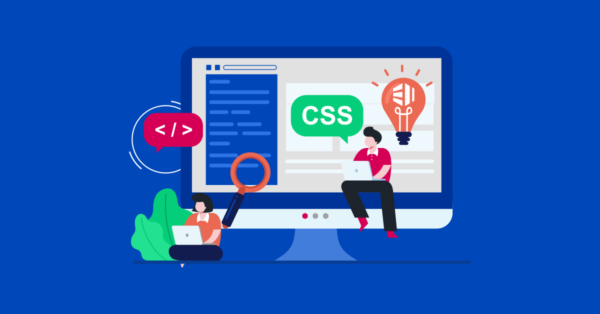Introduction to CSS:
CSS Full Form: CSS, or Cascading Style Sheets, is a fundamental component of web design, allowing developers to define the visual appearance and layout of web pages. Despite its importance, there is often a lack of comprehensive documentation on how to effectively utilize CSS. For many web administrators, CSS remains optional and often misunderstood. However, whether you’re a novice or an experienced developer, understanding the significance of CSS in web design is crucial for creating visually appealing and user-friendly websites.
The Importance of CSS: CSS Full Form
CSS serves as the backbone of modern web design, enabling developers to implement various styles and elements seamlessly into their stylesheets. By harnessing the power of CSS, developers can create dynamic and responsive web pages tailored to meet specific design requirements. The flexibility offered by CSS allows for the creation of visually stunning layouts, ensuring a captivating user experience for website visitors.
Syntax and Grammar in CSS:
While CSS syntax is relatively straightforward, there are certain nuances and rules that developers must adhere to when writing CSS code. Proper grammar and syntax are essential for ensuring compatibility across different browsers and platforms. However, developers may encounter challenges when dealing with special syntax or unique features, which can sometimes pose difficulties for web design software.
Utilizing CSS in Web Design:
The versatility of CSS makes it an invaluable tool for web designers looking to enhance the visual appeal and functionality of their websites. From customizing fonts and colors to defining layout structures, CSS offers limitless possibilities for creative expression in web design. By mastering CSS, designers can create cohesive and visually stunning websites that captivate audiences and leave a lasting impression.
Applications of CSS in Web Design:
CSS finds widespread application in various aspects of web design, including the creation of responsive layouts, styling HTML elements, and optimizing page performance. With CSS, designers can efficiently manage styling across multiple web pages, ensuring consistency and coherence in design. Additionally, CSS enables developers to implement advanced styling techniques, such as animations and transitions, to enhance user engagement and interaction.
Benefits of Using CSS:
By integrating CSS into their web design workflow, developers can reap numerous benefits, including improved design flexibility, streamlined development processes, and enhanced user experience. CSS enables developers to create modular and reusable stylesheets, facilitating easier maintenance and updates to website designs. Furthermore, CSS empowers designers to implement responsive design principles, ensuring optimal performance across various devices and screen sizes.
Conclusion:
In conclusion, (CSS Full Form) CSS plays a pivotal role in modern web design, offering developers unparalleled flexibility and control over the visual appearance and layout of websites. By mastering CSS, designers can unleash their creativity and create visually stunning web experiences that resonate with audiences. Despite its complexities, CSS remains an indispensable tool for web designers seeking to push the boundaries of creativity and innovation in the digital realm.
FAQs about CSS Full Form
What is CSS, and why is it important in web design?
CSS, or Cascading Style Sheets, is a fundamental language used in web development to define the visual appearance and layout of web pages. It plays a crucial role in web design by allowing developers to customize the style, color, font, and layout of HTML elements. CSS is essential for creating visually appealing and user-friendly websites, providing designers with the flexibility to create dynamic and responsive layouts.
How does CSS syntax and grammar impact web design?
CSS syntax refers to the rules and conventions used to write CSS code. Proper grammar and syntax are essential for ensuring compatibility across different browsers and platforms. Understanding CSS syntax is crucial for developers to effectively style HTML elements and create visually cohesive web designs. By adhering to CSS grammar rules, designers can ensure consistency and compatibility across various devices and screen sizes.
What are the benefits of using CSS in web design?
CSS offers numerous benefits for web designers, including improved design flexibility, streamlined development processes, and enhanced user experience. By integrating CSS into their workflow, designers can create modular and reusable stylesheets, facilitating easier maintenance and updates to website designs. Additionally, CSS enables developers to implement responsive design principles, ensuring optimal performance across different devices and screen resolutions.
How can I learn CSS and improve my web design skills?
There are various resources available online for learning CSS, including tutorials, courses, and documentation. Beginners can start by exploring introductory CSS tutorials and gradually progress to more advanced topics. Practicing CSS by working on personal projects or contributing to open-source projects can also help improve web design skills. Additionally, joining online communities and forums dedicated to web development can provide valuable insights and support from experienced professionals.
What are some common challenges faced when working with CSS?
While CSS offers immense flexibility and creative freedom in web design, developers may encounter challenges such as browser compatibility issues, complex layouts, and CSS specificity conflicts. Browser inconsistencies can sometimes lead to unexpected behavior and require additional testing and debugging. Additionally, managing large CSS codebases and maintaining consistency across multiple web pages can be daunting tasks. However, with proper knowledge and experience, these challenges can be effectively addressed to create polished and professional websites.




